One of the best instant foods you should have in your stockpile is ramen noodles. Instant ramen is well-known as the staple food for many college students. If college students can live off of Ramen for a few years, then so can you if necessity calls for it. Ramen is a super light and easy to make food that lasts for a long time. It is a good source of carbohydrates that gives you energy. It also contains high levels of sodium, which isn’t always a bad thing since sodium is an important nutrient that plays a key role in our nerve and muscle functions.
The great thing about ramen is that it only really requires 2-4 minutes to make in boiling water, and it only has about 188 calories per serving. It is such a super cheap and tasty meal that will be a very wise and practical addition to the variety of your food stockpile.
Best Ramen to Store
There are plenty of good brands of instant ramen that you can store. Here are two of the best:
- Nissin Top Ramen
Nissin Top Ramen has grown to be a staple prepper food. These instant noodles are very affordable and filling. You can get 48 packs for just $9.49 at Costco! This comes up to only around 20 cents per pack. Nissin Top Ramen is easily available at just about any grocery store and is purchasable online.
- Nongshim Shin Ramyun
Shin Ramyun is another delicious instant ramen option. Shin Ramyun is one of the best selling ramens around the world. This ramen is made from fresh produce and a blend of great complimentary spices that enhances its taste, guaranteeing you a satisfyingly delicious instant meal. One pack is around 40 cents. And you can find them at any grocery store such as Walmart and Costco. Shin Ramyun is also available in bulk packs online.
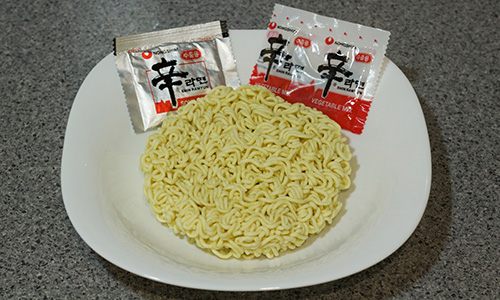 Shelf Life
Shelf Life
An instant ramen pack generally has a shelf life of anywhere between 2 to 12 months. Ramen will last for a while past its Best Before Date because of its preservatives. But the shelf life depends on a few factors and conditions, namely the storage method, room conditions, and the type of noodles.
Some people make a personal rule of keeping and consuming their stock of ramen noodles within a year past their Best Before Date. While some might question the wisdom in this, it might be helpful to consider the many claims that ramen noodles can be stored for a few years and still turn out just fine when cooked and consumed. That’s why some say that if you store it properly, ramen may even last for 10+ years. But it would be best to keep its storage time to just a year or so past its Best Before Date. You wouldn’t want to end up with the risk of having the noodles tasting stale after being stored for a very long time.
When it comes to instant ramen, the more protected the packs are from moisture, the better. Storing the ramen somewhere humid could spoil it. You will know that the ramen is spoilt when you open a pack. It will definitely smell! If you’ve stored the ramen for quite a long while, be sure to check for molds and discoloration before you cook it.
Storage
Instant ramen noodles don’t require much when it comes to storing. A pantry or cabinet will do just fine.
Here’s a simple guideline to storing ramen:
- Keep your stock away from heat sources and sunlight.
- Keep them in low humidity.
- Store them in a cool place or at room temperature.
- Do not store them with food or items that emit a strong smell.
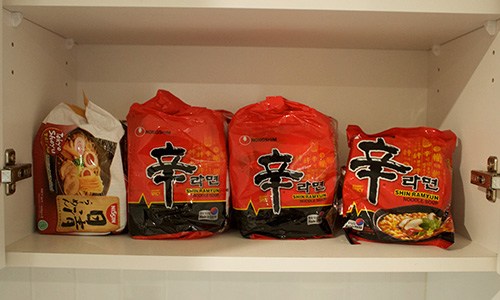 Best Ways to Have Ramen
Best Ways to Have Ramen
Ramen can be prepared in a variety of ways, and it all depends on the mood you are in, the flavors you are craving, and the creativity you put into it.
If you want to make it more nutritious and healthy, you can add vegetables such as onions, spinach, carrots, shallots, and lettuce to it. For more protein, you can add eggs and any type of meat, depending on what you have in stock.
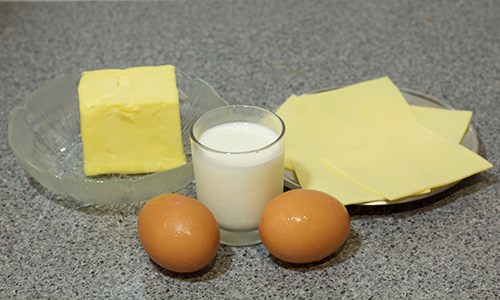 Having protein with your ramen helps energize you and make you feel full for longer. An example of meat that goes well with ramen is Spam. It is high in protein and packed with energy, which makes it a good complement to ramen.
Having protein with your ramen helps energize you and make you feel full for longer. An example of meat that goes well with ramen is Spam. It is high in protein and packed with energy, which makes it a good complement to ramen.
Below are a few ways to upgrade your instant ramen into a gratifyingly flavourful meal. You can use these as a guide or you can follow any recipe of your choice to the letter.
Ramen contents and basic ingredients you may use:
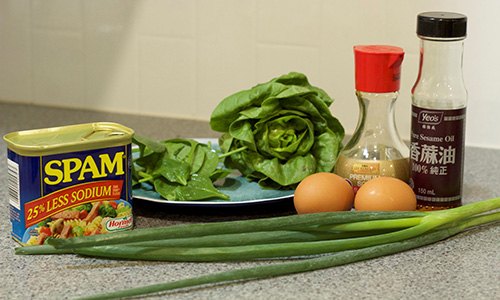 Method 1
Method 1
Ingredients:
- 1 ramen pack
- 2 tablespoons of soy sauce
- 1 ½ tablespoons of sesame oil
- ¼ cup of milk.
- Cheese (however much you prefer)
- Baby spinach
- Shallots
- Lettuce
- 1 boiled egg
- Spam and/or beef jerky, or other types of meat you prefer
- Nori seaweed (optional)
Preparation:
- Boil about 500ml of water on medium-high heat.
- Pour both instant packets into hot water along with soy sauce, sesame oil, and milk.
- When water starts to steam, put the noodle brick in.
- Stir and move noodle brick around occasionally until it softens and breaks apart (This may take about 2 minutes).
- Once the noodles are done, turn off the heat and remove the pot from the stove top.
- Then put the lettuce, spinach, and shallots into the pot and mix them in. You can also add other vegetables if you wish.
- Put in sliced Spam and/or other types of meat you prefer.
- Put the slices of cheese on top while hot.
- Enjoy it with a garnish of some nori and sliced boiled egg.
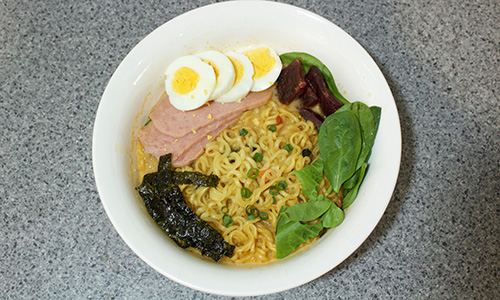 There are two possible ways to prepare this recipe with garnishes which are shown in these pictures.
There are two possible ways to prepare this recipe with garnishes which are shown in these pictures.
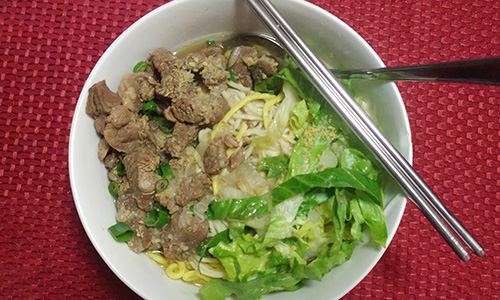 Method 2
Method 2
Ingredients:
- 1 ramen pack
- 2 tablespoons of soy sauce
- 1 ½ tablespoons of sesame oil
- Paprika
- 1 minced clove of garlic (sautéed)
- Shallots
- Carrots
- Lettuce
- Cheese (however much you prefer)
- 1 egg
- Spam and/or beef jerky, or other types of meat you prefer
- Nori seaweeds (optional)
Preparation:
- Boil about 500ml of water on medium-high heat.
- Pour both instant packets into hot water along with soy sauce, sesame oil, paprika, and garlic.
- Crack the egg into the soup and stir well.
- When water starts to steam, put the noodles in.
- Stir and move noodle brick around occasionally until it softens and breaks apart (This may take about 2 minutes).
- Once noodles are done, turn off the heat and remove the pot from the stovetop.
- Then put the lettuce, spinach, carrots, and shallots into the pot and mix them in. You can also add other vegetables if you wish.
- Put in Spam and/or other types of meat you prefer.
- Garnish it with more shallots and cheese and enjoy with some nori.
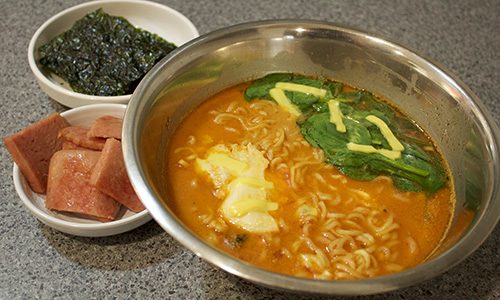
There is another recipe that you can try using the ingredients from above. Meat lovers will definitely like this one.
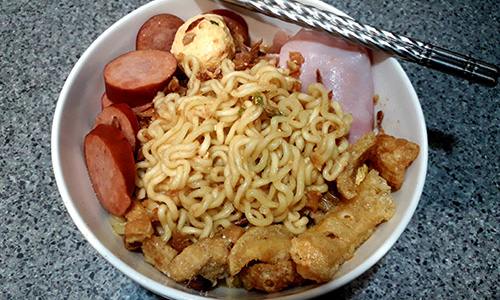 And the third possible way to prepare this recipe with garnishes is shown in the picture below:
And the third possible way to prepare this recipe with garnishes is shown in the picture below:
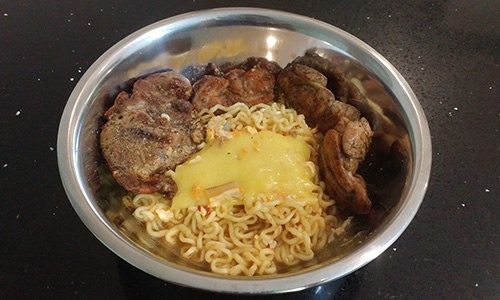 Method 3
Method 3
Ingredients:
- 1 ramen pack
- ½ teaspoon butter
- Corns, peas, and potatoes
- Spam, beef jerky, chicken (any of these or a combination)
- 1 egg
Preparation:
- Follow pack directions for cooking.
- Stir in vegetables and butter, then leave to simmer.
- Fry egg and put on top along with the meat. Then enjoy.
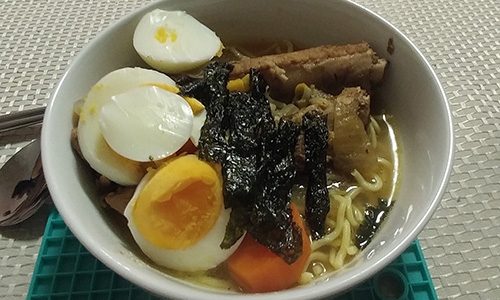
There are also two possible ways to prepare it:
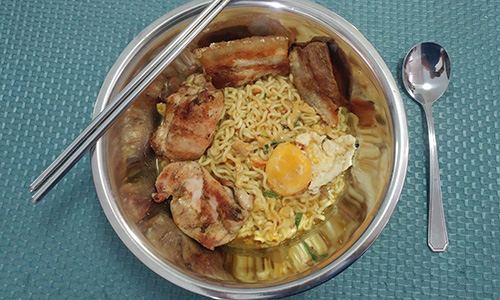 All in all, instant ramen can be mixed and cooked with a wide range of simple prepper foods.
All in all, instant ramen can be mixed and cooked with a wide range of simple prepper foods.
It is definitely a good and ideal food source that should be in every preppers’ food stockpile.
You may also like:
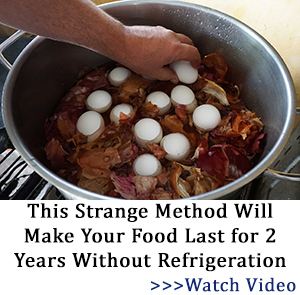 $1.70 a Day – 90 Days Emergency Food Kit
$1.70 a Day – 90 Days Emergency Food Kit
How To Survive And Thrive Through Any Water Crisis (Video)
A Brilliant $300 Food Stockpile for 3 Months

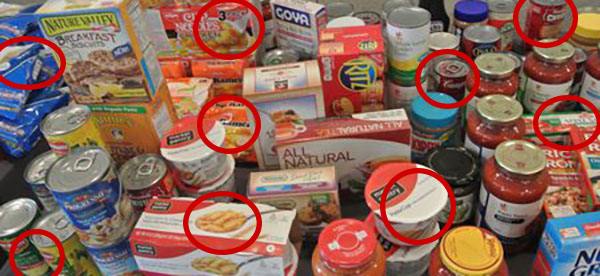













One of my favorite prep foods for BOB. Extremely lightweight and the foil packets are easy to store for future. Because of excess salt, I usually only use 1/2 a packet per package. So every two meals, I store a packet for future. I use them to flavor other meals like rice or vermicelli. So many different flavors to vary the menu. I usually make it in a cup so I drink the broth 1st, then eat.
Adding small amounts of meat can stretch it to a full meal as stated above. If meat is dehydrated, allow it to gain moisture to cooking vessel early and soaking in small amount of water. That is when I usually add the seasoning packet as well, stirring to spread it. Then I add the noodles and heat. Ramen is great stuff.
Your ideas are very good. I don’t use the packet as too much salt even at a half package, so I use seasonings that are salt-free. I do save the packets and when I make homemade casseroles, homemade soup, or bake meat, etc., anything homemade I use them, I do not add any salt the packets are just enough for me. I want to taste the food, not the salt.
chicken or beef broth and a half can of mixed veggies >>> better than most cans of factory soups ….
Excellent reminder that Ramen is a good prep item especially when dressed-up a bit. Short shelf life, compared to some other prep foods but I lived on the Ramen diet while in college and as a young man out on my own with limited income back in the day … when beer and girls were more important than eating.
Ah the hidden survival food literally every college kid and anyone that has ever struggled financially knows all about. Next your going to make a whole article about another hidden food: spam! Or rice!
Only thing about this that was new to me was the enhanced recipe for it :/
Sure it’s cheap, but can you digest it?
https://firstwefeast.com/eat/2015/08/instant-ramen-digestion-video-what-happens-inside-your-body
Squirrels, Possums And Mice. Mmmm Mmmm Mmm. Hard to beat.
ETR- are they eating your ramen or being served with the ramen? Lol!
Just an FYI, I have had pantry moths get into ramen packages when I had an infestation a few years ago. If nothing else, double wrap them by storing in large ziplock bags for longer term than a few months.
Snip the bags at a corner and place two (because one just isn’t enough) side by side into a vacuum bag, add an oxygen absorber, vac and seal. Impervious to bugs and moisture.
I would love to hoard Ramen but I am highly allergic to gluten. sigh…
There are also gluten-free noodles which are actually very good. Give them a try.
Rice noodles. They’re very good, but not really the same, as far as taste and texture.
Yeah, not just slightly for our entire family. PLUS all of the Ramen flavor packets to my knowledge contain some form or another of MSG,which can kill you over time. Also causes severe allergies and aFib (heart problems)! NO RAMEN FOR ME!
We can, however, use gluten free noodles or differing types/sizes and add in our canned beef, chicken, tuna or salmon and our own spices as needed. :-). YAYAYAYAY!!
be sure to store them where rodents cannot possibly get to them,, lost a whole cabinet because there was a VERY TINY hole in it.
also to holp the flavor I sometimes use chicken or beef stock as the liquid rather than water.
Our favorite ways to make it is to add chopped hot dogs, crumbled hamburger, or other meat and any vegetables while boiling, then drain off most of the water. Whisk several eggs. Return to heat and add the eggs and stir while cooking. Top with chopped green onions. This makes it almost like a casserole and is very filling and yummy. Other wise, we would make according to directions with the added hot dogs during cooking and mixing in chopped hard boiled eggs and seasoning packet after draining most of the water. My kids love it both ways.
Thanks for the tips on ramen.
I have never tried those brands before and will
check them out on my next shopping trip.
Nongshim Shin Ramyun is a Chinese company. Instant ramen was a Japanese invention.
Considering all the adverse news about adulterated Chinese products, proceed as you deem best.
With a couple billion people, it stands to reason that Chinese ramen is the best selling ramen in the world. Just the domestic market makes it so. How about in the real world, how does it sell?
We only use marachuan brand. They are made in the US. My boys invented about a hundred ways to serve them when they were growing up. We still use them.
Nongshim is a Korean brand. Look it up.
I just drain the noodles and then crack two eggs and scramble them in the noodles.
I like the idea of the eggs scrambled in the noodles. Personally, I’d add a handful of finely chopped parsley and another of chopped onion to it (I add them to almost everything!)
If you are hungry enough, stale ramen noodles will taste like ambrosia. Moldy noodles are something else, but I am reading a book about famines in China, India, Africa, Brazil — and I haven’t gotten to the other parts yet.
The “Gay 90’s” of the last decade of the 19th century were anything but gay if you were a farmer or modest income anything and lived in those benighted countries. There were back to back droughts starting in the late 1880s and continuing through the turn of the century that resulted in the deaths by starvation and the follow-along diseases that always accompany starvation, dysentery, cholera, typhus and in the case of parts of India, bubonic plague.
The author recounts observers who watched Indians eating the uncooked entrails of dead animals by the side of the road because they were softer to chew. One of the early signs of scurvy is the loosening and loss of one’s teeth.
Over 100 million people died in the famines that swept the world in those two decades. And, of course, with such massive die-offs, there was nobody to bury the dead, so they just rotted where they fell, adding to the general misery and disease.
So, stale noodles in an EOTW scenario might be the least of your problems.
While too much salt may not be as much of a problem in an EOTW situation, prior to that Spam which is salty and the seasoning that accompanies the ramen is salty and soy sauce is salty, so if you are on a low salt diet for any reason, you might want to read the labels before following some of the recipes listed in the article. If you add Spam and soy sauce and the package seasoning to a bowl of ramen, your salt-o-meter likely will peg on the highest reading. And that’s if you are NOT on a low salt diet.
Sure it’s cheap, but can you digest it?
I prefer to whisk a couple of eggs in a separate bowl. After the noodles come to a boil add a little egg to the pot. Allow the eggs to solidify and the noodles start to boil then continue adding the eggs a little at a time. You’ll end up with bite-size chunks of egg.
It you stir the eggs in with the noodles while they’re cooking you’ll end up with soup which is ok if that’s what you want.
I learned this trick while stationed in Korea.
Thanks for the tip, Tarheel. I have always wanted to have chunks of egg in my soups like I saw in the Far East when there and have never been able to achieve what I thought were a reasonable facsimile. It’s too late for tonight’s miso and tofu soup but the very next time I have some Japanese household favorites I am definitely goin to try your method.
As another has pointed out, most of us are familiar with ramen, so this is no secret.
Since a single serving of ramen has 1300-1800mg of sodium, which is over half the amount recommended per day, and most of that is in the “flavor” packet, I rarely use those packets. Instead, I can put together my own spices as I would for other cooking that has little to no sodium, and add salt as I wish.
The other thing is it is that this is almost all simple carbs that can spike your insulin if you don’t buffer it with lots of protein and some fats. For so few calories (less than 400 per package), it is dishing out a lot of carbs and sodium. At least you’ll get your iron for the day from the enriched wheat in the package.
“Survival” food is a most apt description, and that’s about all this garbage is for, “Survival”!
That is the point. Its survival food. It’s quick carbohydrates, long shelf life.
Try the article “We should consider eating our own poop” by Josh Evans. He states that as much as 50% of the original nutrition is still present in our poop, that poop should be framed as recycled food the way we recycle water. Poop, then, is more nutritious than ramen. Mr. Evans reminds us we should each only eat our own.
While there is a place for ramen as a lightweight carb-rich food source, hopefully we can do better.
I think I will skip the Soylent Brown, thank you.
Not many people remember that famous movie … Soylent Green … you must be a really old fart?
At least we very old farts have actually seen this movie ! Lol
i remember seein Soylent Green when it first came out and I’m only 69 so I am living proof you don’t have to be a really old fart to remember
Lol
Most Ramen noodles are difficult to digest or tolerate because of ingredients and sodium content. However, Lotus Foods puts out an organic Ramen noodle made with rice, buckwheat, millet and other grains so it’s more digestible and you can use less packet to cut sodium or use Bragg’s Amino Acid instead of soy.
3 packages of ramen and one large can of cream of chicken soup mixed together. Cook ramen, drain most of the liquid before adding the seasoning pack. Mix in the soup. You can eat it like this or add veggies, meat or whatever you want. An entire meal for 3-4 people for 5$.
Good post. We like to add one pkg of ramen to a can of soup (any kind). Easy and quick.
There’s nothing wrong with ramen and it’s a good change of pace but it’s not that cheap. The average adult needs 2000 calories a day. That’s 10 packs of ramen a day. A lb of rice and 1/2 pound of dried beans will feed a person for a day and supply complete protein. Easily achieved for a dollar. But you need a break and rotating the diet will help!
But ten packs of ramen are a lot lighter than a pound and a half of rice and beans if you are forced to bug out by shank’s mare. Of course, a couple of cans of Spam and you are right back where you started with the bean and rice.
Studies have been done with M2A camera pills … not the stuff you want to watch before bed time, but curious none the less : https://firstwefeast.com/eat/2015/08/instant-ramen-digestion-video-what-happens-inside-your-body
My husband likes chicken lavor Ramen, 1/2 can or 1/2 cup of frozen mixed veggies, 1/2 container of Vienna sausage, or a couple slices of spam lightly browned. For my bowl I add a single beaten egg stirred in the boiling liquid, and 1/4 cup bean sprouts.
I’m not a big fan of vienna sausage or ramen but its a cheap change of pace. I do have some on the pantry shelf for a quick warm meal. And a grandsons snacks.
https://vimeo.com/64989646 …. don’t think about it ….
1/2 packet of seasoning is plenty for me. If you want to add soy sauce use one with reduced salt. I’m a low salt user just by choice, not Dr orders. Husband with blood pressure and heart problems can’t have so much salt. We share a packet between 2 packages of ramen. Extras go in a Bob in the car. Can use it as a soup base or for bullion to drink hot. Forraged greens are tasty cooked with a bit of the seasoning added.
There’s some nice ideas her for dressing up ramen into some good meals. But remember that ramen has a little oil in it which will turn it rancid at some point. I had to throw out some that was well past it’s date. Had it stored in a cool place, so it lasted quite well, but eventually succumbed to rancidity. You can definitely tell by the smell that it is rancid. Rancid food is very toxic so it’s better to eat nothing than to eat rancid ramen
I have long wondered if rancid food was really dangerous to eat or did it just taste that way; or if it was dangerous to eat, just how dangerous was it. I went on line to see if I could find out and I have three sources I have pasted below. When considering an unsupported opinion, also consider the background and reputation of the opinionated when considering the validity of their comments. If an article just contains verbiage and no references, consider the source but also consider that the opinion may really not be very valid. I can offer my opinion, but with no background in food chemistry and relying solely on my tastebuds, my opinion would be no more valid than anyone else’s/
Tip (from: live strong.com)
Consuming rancid edible oil may leave an unpleasant taste, but it may not make you sick right away. However, the compromised oil can develop harmful free radicals that cause long-term cell damage and potentially lead to the development of chronic diseases. live strong.com
Is Eating Rancid Oil Bad for Your Health?
We all know that oil that has gone bad smells rancid and tastes stale, but what are the health effects of using rancid vegetable oil in cooking? Does spoiled oil contain some toxic substances that makes eating food containing rancid oil dangerous, or is it just unpleasant to the palate? HealWithFood.org embarked on a mission to find out whether rancid oil is really bad for you. Here are the results – three interesting facts you should know about rancid oils in relation to human health:
Rancid Oils May Cause Cancer
Plant-based oils, such as safflower oil and sunflower oil, contain plenty of polyunsaturated fatty acids (PUFAs) which oxidize easily in the presence of light, heat, or oxygen in the air. Many of the oxidation products of PUFAs have been reported to have cytotoxic (toxic to cells) and mutagenic (capable of changing the DNA) effects. Cytotoxic and mutagenic substances are commonly known to increase the risk of cancer, and indeed, a 2002 study published in the journal Anticancer Research reported that rancid oils not only appear to be involved in tumor promotion but also in tumor initiation. This study was carried out on mice, and rancid corn oil was used as the source of spoiled fatty acids.
Rancid Oils Deplete Vitamin E Levels
Edible oils – such as extra-virgin olive oil, almond oil and sunflower oil – are excellent dietary sources of vitamin E. For example, just one tablespoon of extra-virgin olive oil contains nearly 2 milligrams of vitamin E, which corresponds to a whopping 10% of the reference daily value for vitamin E. Vitamin E is a powerful antioxidant that can protect the human body from dangerous free radicals that have been linked to an increased risk of numerous diseases and health problems. However, rancid oil appears to be capable of depleting vitamin E levels. A 1996 study published in the journal Aquaculture Research reported that blood levels of α-tocopherol acetate (a type of vitamin E) increased significantly in African catfish when the fish were given extra doses of α-tocopherol, but that those levels saw a significant drop when the fish were given rancid oil to eat.
Some Oils Are More Prone to Oxidation
Polyunsaturated fatty acids (PUFAs) include the essential fatty acids, including the super-healthy omega-3s that are being touted by nutritionists and health gurus around the world. However, compared to fats that are rich in saturated fatty acids (such as coconut oil or butter), edible oils that are rich in PUFAs are highly unstable and prone to oxidation. This means that many healthy, plant-based sources of dietary fat – such as hemp seed oil, walnut oil, grape seed oil, and unrefined safflower and sunflower oils – can go rancid within a very short period time. Oils like olive oil, avocado oil, and macadamia nut oil, on the other hand, have a longer shelf life due to their lower concentration of PUFAs and higher concentration of monounsaturated fatty acids (MUFAs).
Source: https://www.healwithfood.org/bad-for-you/rancid-oil.php#ixzz6e5wuF8pB
Does your cupboard hold a package of unfinished crackers? An old bag of whole-grain flour? Some leftover nuts from holiday baking? Or perhaps a bottle of vegetable oil you’ve been slow to finish?
If so, you may be harboring dangerous, rancid foods.
Protecting against rancidity, which occurs when oils oxidize, has long been a challenge for home cooks. A recent stew of factors has made the issue more serious.
Strangely enough, this situation comes courtesy of the rising popularity of “healthy” polyunsaturated fats, whole-grain flours and huge product packages available at warehouse stores. Taken together, they’ve resulted in American pantries full of food that goes rancid much faster than many think.
So what’s wrong with eating rancid oils?
At least two things, says lipid specialist and University of Massachusetts professor Eric Decker. “One is that they lose their vitamins, but they also can develop potentially toxic compounds” that have been linked to advanced aging, neurological disorders, heart disease and cancer.
“They’re carcinogenic, pro-inflammatory and very toxic,” says integrative medicine specialist Andrew Weil. “They are also widespread in the food chain.”
The growing problem is a byproduct of Americans and food manufacturers swapping trans fats for polyunsaturates in the last 10 years. This has resulted in a whopping 58 percent drop in trans fatty acid consumption in the U.S., according to a recent government report.
For all of their artery-blocking evil, trans fats had one big benefit: They were stable, meaning they took forever to go bad. The same is true of highly refined white flours. When these flours and fats were replaced with whole-grain flours and polyunsaturates,, that shelf stability collapsed.
Americans followed orders to ditch saturated and trans fats for polyunsaturated (vegetable) and monounsaturated (olive, canola and peanut) fats, but didn’t realize these healthier fats don’t last nearly as long.
“People buy these huge containers of oil [at warehouse clubs] and just don’t realize that there’s no way they can use it before it goes rancid,” Decker says.
THE DALLAS MORNING NEWS ARTICLE:
While monounsaturates also can go rancid after about a year, they are 10 times more stable than polyunsaturates, Decker says. People need to minimize the use of polyunsaturated oils, Weil says. “And if you do use them, keep them in the refrigerator in the dark, and buy only small amounts that you use up quickly.”
Many consumers don’t know the telltale stale, paintlike odor. Because air, light and heat speed up oxidation, don’t buy vegetable oil in a clear bottle and place it on the counter in a warm kitchen for several months. Store oils and whole-grain flours in the refrigerator or freezer. Whole, intact grains and nuts in their shells last much longer.
Chicago Tribune
Are you going to eat that?
Although the FDA oversees advice on the safe storage of food at home, it has not updated its recommendations since the gradual switch from saturated fats to unsaturated fats in food production.
Experts advise paying close attention to “use by” and “sell by” dates on packages, which may have changed in recent years because of new formulations.
The Institute of Food Technologists’ Kantha Shelke says she’s found that similar boxes of soda crackers using refined and whole-grain flours had shelf lives of 141 and 80 days, respectively, when left unopened.
In general, buy products that contain oils or fats in small quantities.
Store most cooking oils in a cool, dark cabinet — not next to the stove.
Refrigerate polyunsaturated oils, especially fish, nut and flax seed oils.
Store nuts and whole-grain flours in the freezer.
Thanks for the research you’ve done on this Chuck. I appreciate all your posts and read them first. Thanks again…………….nemo
If you have ingredients to make ramen palatable & nutritious, you don’t need the ramen. Cery very very poor nutrition choice.
Split peas, lentils. Cheaper, far more nutritious, calorically dense, tasty, don’t have to add SPAM.
I like to mix in a tablespoon or two of peanut butter, hot sauce and lemon juice to taste, an egg or two and a can of unsalted mixed veg with the liquid. This gives two servings.
If you crack in the eggs whole and don’t scramble them, lower the temperature to a simmer to give you a perfect boiled egg with the center just runny in the center. Stir as little as possible so the egg stays intact. The noodles will get stuck, but the yolk will remain whole.
I’ve had ramen, but i’d rather have other foods and prepare them so they can be instant. Cooking up beans or rice, then dehydrating them and packaging them in airtight containers will make them instant foods by adding hot water.
When i was a poor college student, I didn’t live on ramen. i used a goodly amount of rice and added stuff to it for variety and additional nutrients (veggies, cheese, meat or seafood).
I did eat some ramen where the oils had turns rancid. I am here to tell the tale, but I don’t recommend it.
Still if i find myself in a space where there’s a whole lot of ramen and not much else, the article gives some good ideas about how to jazz it up.
Just ate some that expired in 2015,,,Still Tasted Good and I am Still Alive….
One drawback of storing ramen is if you happen to have pantry moths – first time ever it happened to me. Doesn’t matter if the pkg is new or old these “little buggers” (pun intended) will put a hole in cardboard, plastic, or similar type packaging. I’ve now had to store things in heavy duty plastic or glass containers (preferably since mice can eat thru heavy plastic). They must have originally came from a package I just bought at the store and they got into everything including my sealed brand new box of bisquick recently. SO be mindful when you bring things home and check over the packaging before you store it. Your best bet is to open it and seal it in a sturdier container. WHo woud have thought a harmless tiny moth could do so much damage. Research this moth. Don’t take my word for it.
I totally agree! I have had pantry moths several times over the years, and they DO like ramen. They can be eradicated, but it isn’t easy – or necessarily cheap. We have a parrot, and I know that infested bird seed has been the culprit at least once, but they’ve come home in purchased dry goods too. I now repackage most things in glass or heavy plastic containers, but glass is good because I can heat the jars in the oven before sealing for long term storage.
One thing we have done for years to prevent bugs in our flour, and other items, is to place whole bay leaves in the bottom, middle, and near the top of the flour. Use 3-4 leaves per each layer. Never, to the best of my memory and my wife’s, we have never had bugs where the bay leaves were placed.
I’ve been doing the bay leaves for the last few years too and no problems so far
I put a few around packages in buckets just for extra.
In my case I’ve gotten a 25 year old 10 kg bag of bakers flour in a tin container that still looks and smells perfect
I am gluten free now so haven’t tried it. I thought if needed could give to someone or make bread etc to feed the pets if had to
It really does seem perfectly good though
I’ve had them come in from the store in new product…the infestations are horrible and very hard to get rid of once they get a foothold in your house or business. I’ve also seen the adults flying around in the hallways of my apartment building. If you are in a multi family dwelling all it takes is one person who put something up on a top shelf in the cupboard and forgot about it…then EVERYONE will get them. It’s like bedbugs. You always need to look over any new purchases, even brand new from the store.
What’s the difference between Ramen Noodles and Spaghetti noodles? Since I can’t eat Ramen foods I store lots of pasta noodles instead. That way I can make whatever I want and make other things with the noodles. The spice packs have too much salt and none of my family needs extra salt due to high blood pressure
Ramen is pre-cooked and then dehydrated. If you have a dehydrator, you could experiment with any kind of noodle. Glass noodles and vermicelli or angel hair pasta are all skinny enough that if you put them in a pre heated thermos of boiling water they would cook in a short period but you’d have to figure out the correct timing. They cook the regular way in a short time, about 5 minutes. Either method, you would have to drain them to get rid of the extra starch.
It doesn’t matter whether you prefer dried beans, rice or ramen…the main issue here is the ability to have boiling water to cook the stuff in. Bad idea to make a fire (smoke) in a SHTF scenario, never mind some hungry humans smelling hot food.
Wanna see what $20 worth or ramen purchased at a food auction looks like? https://drive.google.com/file/d/1wzAgLGp65taIbmeX044QvAuOs7lIYWcs/view?usp=sharing
Mostly gone, one of my sons is an idiot and threw it out, and I managed not disown him.
THANKS to whomever it was that mentioned that Lotus Foods now offers gluten-free noodles like Ramen. I ended up buying the SOBA noodles instead, but they are the sort of thing that adds a lot of flavor AND NUTIRITON! I ordered a case of 8 to try them and store the rest.
Thanks so much for the heads up that some companies are coming up with foods for gluten intolerance!
Dry ramen also doubles as a fire starter!